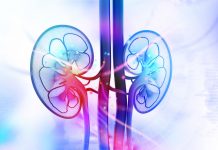This month in RPA we explored the issue of non-alcoholic fatty liver disease and how pharmacy assistants can support their patients in maintaining or regaining a healthy liver.
When encountering customers who may report diagnosis of non-alcoholic fatty liver disease (NAFLD), it’s important to remember that this condition includes a range of issues caused by the build-up of fat in the liver, with one of the main contributors being excess weight or obesity, according to the UK’s National Health Service (NHS).
The NHS says that while early-stage NAFLD isn’t typically harmful, if left unmanaged it can lead to more serious health concerns and liver damage, including liver cirrhosis.
According to pharmacist and herbalist Gerald Quigley, NAFLD “is exactly as it sounds” – the accumulation of fat around the liver, specifically in people who drink very little or no alcohol.
“We know that excess alcohol causes fatty liver and a number of liver diseases,” he said, “but it’s estimated that up to 20 per cent of the population has non-alcohol related fatty liver disease, and it causes a lot of concern.”
Mr Quigley says NAFLD is “the most common liver disease” and a “common cause of liver disease in children”.
Although it’s a common condition, typically diagnosed by a blood test to check liver enzymes, he adds that, worryingly, the consensus is that there’s no treatment for NAFLD, and often patients are told not to be concerned about the diagnosis.
“But most people do worry about it,” he said, “because if you’re told that … you have fatty liver disease, with that emphasis on the word disease, most people want to do something about it. And it’s something that we can certainly do something about.”
Prevention is better than cure, so while managing fatty liver disease through diet and lifestyle interventions is possible, it’s also important to understand the risk factors – thereby, hopefully, preventing the disease from occurring in the first place.
According to Mr Quigley, one of the main risk factors for NAFLD is obesity – “particularly where fat is [accumulated] in the abdomen.”
He adds that if someone has excess weight (or specifically, excess body fat) around their abdomen, this poses a higher risk for NAFLD.
Other risk factors, he says, include elevated cholesterol levels, specifically triglycerides, as well as poor blood glucose control and poor pancreatic function.
Addressing poorly controlled blood glucose levels, Mr Quigley says type 2 diabetes is another risk factor, as well as issues with “low or high thyroid [function]”.
Typically, when a patient receives the diagnosis of elevated liver enzymes, indicating a fatty liver, “they’re encouraged to go off and do some other tests to find out if there’s an underlying cause, which is “usually where the focus is”, Mr Quigley says.
Seeing a GP for blood tests to diagnose fatty liver disease is the ideal way to determine whether something is off-kilter, he adds, with fatigue one of the first symptoms of fatty liver disease that indicates something is not quite right.
“These people get tired,” Mr Quigley said, adding that fatigue is often the first red flag that prompts the GP to organise blood work.
Another symptom is abdominal pain, particularly diffuse pain on the right-hand side of the abdomen.
Mr Quigley says fatty liver is often discovered during routine blood tests.
“That’s when liver enzyme discrepancies are found,” he said.
Once NAFLD has been diagnosed, a priority for patients is to begin addressing the cause, considering diet and lifestyle factors that may have contributed to the diagnosis, because, Mr Quigley says, ignoring this issue could have serious consequences, such as jaundice and hepatitis.
“It [fatty liver] can have serious ramifications [if left] untreated,” he said. “If your liver is surrounded by fat, it will get worse and worse.”
Patients should do something about it, he advises.
“When you actually support healthy liver function, things improve within months,” Mr Quigley said. “It’s quite dramatic and everybody’s happy.”
Without doing too much, he adds, the patient “can make a real difference”, which is where a pharmacy assistant and pharmacist “can play an enormously supportive role”.
Dietary habits are among the first lifestyle factors to address.
“Increase your protein and cut back on carbohydrates, particularly the carbohydrates we know are high in sugar, like white rice, fruit juice, cakes and processed food,” Mr Quigley said.
Alcohol is another contributor, he says, so it’s important to cut back if it’s consumed in excess. Its damaging effects on the liver if consumed in excess are well known, he adds, and it’s important to remember that most alcoholic drinks have a high sugar content, which compounds the issue.
Mr Quigley reiterates that being diagnosed with NAFLD isn’t a “death sentence” and it can be managed through diet and lifestyle.
“You can get your liver enzymes back in order very quickly,” he said, pointing to the benefits of the Mediterranean diet, as well as the herbal supplement milk thistle, which has “specific actions in regenerating liver cells and protecting them against the action of liver poisons”. It also stimulates bile flow, he adds.
“There are clinically proven extracts of milk thistle, and I find I get feedback within three to four months where everybody’s happy and the patient’s delighted,” Mr Quigley said.
Another supplement to consider when working with customers who may have to make significant diet and lifestyle changes due to a fatty liver diagnosis is Ubiquinol (co-enzyme Q10), Mr Quigley says, especially for those who may be reducing their intake of carbohydrates and who may be finding that their energy levels are on the lower side as a result.
“I tend to suggest to people they use Ubiquinol to keep their energy levels up,” he said, adding that a multivitamin in capsule form is also recommended – “to replace what’s missing”.
Mr Quigley says that when it comes to the role of pharmacy assistants in this space, it’s important to reassure customers that, as mentioned above, a fatty liver diagnosis isn’t the end of the world, and that beneficial diet and lifestyle changes can be made.
Pharmacy assistants are in a perfect position, he says, to “chat about food options, gentle and comfortable exercise, milk thistle and, if needed – if they’re reporting fatigue – Ubiquinol along with a multivitamin”.
Mr Quigley encourages pharmacy assistants to “engage in the conversation” with customers, and consider what other medications they might be taking, as some of these may affect liver function, making it that much more important that these customers are following a healthy diet and lifestyle plan.
“So, perhaps they could have those general conversations with the patient,” Mr Quigley said, adding that in the case of older customers taking high doses of sustained-release paracetamol “day after day, week after week, month after month, perhaps there’s an opportunity [to] suggest an option to have some turmeric or one of these other anti-inflammatory herbs to take the pressure [from paracetamol] off that person’s liver”.
This feature was originally published in the October issue of Retail Pharmacy Assistants e-magazine.






